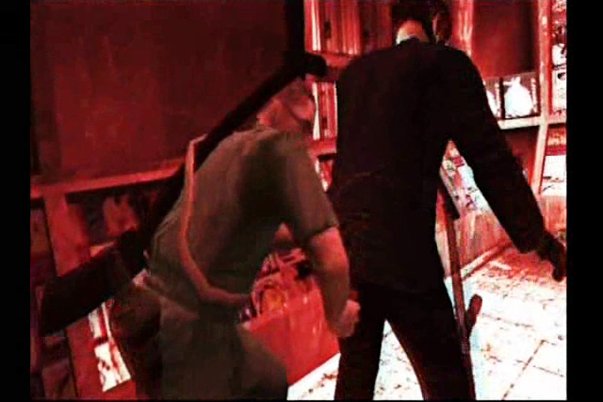Manhunt 2 UNCENSORED video and ESRB's response
View the footage you were never meant to see - and read why the ratings board isn't to blame
How is this situation different from the "Hot Coffee" incident?
The Grand Theft Auto: San Andreas "Hot Coffee" situation involved a scene that was a) fully rendered in an unmodified form on the disc (the Hot Coffee mod did not alter the content that was there, it merely unlocked it), b) not previously disclosed to the ESRB during the rating process, and c) easily accessible to all owners of the PC version of the game. Conversely, in the case of Manhunt 2, a) content that was programmed to be part of the game (i.e., visual blurring effects of certain violent depictions) is being modified, b) the content was previously disclosed to the ESRB, and c) unauthorized versions of software and/or hardware are required to play the modified content.

Above: The infamous "Testi-kill"
How is this situation different from the one with "The Elder Scrolls IV: Oblivion?"
After the release of The Elder Scrolls IV: Oblivion, the ESRB discovered extensive amounts of fully rendered and previously undisclosed blood and gore in the game that warranted a Mature rating. In addition, there was a fully rendered anatomically detailed art file of a topless female character present on the disc that had not been previously disclosed to the ESRB during the rating process. The blood and gore was accessible to all owners of the PC and Xbox 360 versions of the game. The partial nudity was accessible to all owners of the PC version of the game if they downloaded a modification available on the Internet that replaced one version of character artwork for another, both of which existed in a fully rendered form on the disc. Conversely, with Manhunt 2, a) the content in question was previously disclosed to the ESRB, b) the content is being modified by removing the obscuring blur effect that was programmed as part of the game, and c) unauthorized versions of software and/or hardware are required to play the modified content.
Why does this instance not fall under the ESRB's disclosure rule clarification requiring that locked-out content contained in the code on a game disc be considered in the assignment of a rating?
Weekly digests, tales from the communities you love, and more
Our rule clarification following Hot Coffee required that pertinent content that is programmed to be locked out but which exists in an unmodified, fully rendered form on game discs must either be removed or disclosed to ESRB during the rating process. In the case of Manhunt 2, the scenes in question were playable (not locked-out), programmed to include the blur effect, and fully disclosed to the ESRB.
Read our review of this family-friendly romp here.
Above: The infamous "Testi-kill"
How is this situation different from the one with "The Elder Scrolls IV: Oblivion?"
After the release of The Elder Scrolls IV: Oblivion, the ESRB discovered extensive amounts of fully rendered and previously undisclosed blood and gore in the game that warranted a Mature rating. In addition, there was a fully rendered anatomically detailed art file of a topless female character present on the disc that had not been previously disclosed to the ESRB during the rating process. The blood and gore was accessible to all owners of the PC and Xbox 360 versions of the game. The partial nudity was accessible to all owners of the PC version of the game if they downloaded a modification available on the Internet that replaced one version of character artwork for another, both of which existed in a fully rendered form on the disc. Conversely, with Manhunt 2, a) the content in question was previously disclosed to the ESRB, b) the content is being modified by removing the obscuring blur effect that was programmed as part of the game, and c) unauthorized versions of software and/or hardware are required to play the modified content.
Why does this instance not fall under the ESRB's disclosure rule clarification requiring that locked-out content contained in the code on a game disc be considered in the assignment of a rating?
Our rule clarification following Hot Coffee required that pertinent content that is programmed to be locked out but which exists in an unmodified, fully rendered form on game discs must either be removed or disclosed to ESRB during the rating process. In the case of Manhunt 2, the scenes in question were playable (not locked-out), programmed to include the blur effect, and fully disclosed to the ESRB.
Read our review of this family-friendly romphere.


